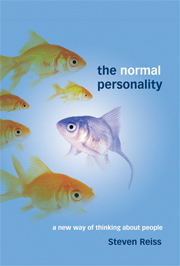Crossref Citations
This Book has been
cited by the following publications. This list is generated based on data provided by Crossref.
Edgeman, Rick L.
and
Fraley, Lynn A.
2008.
A System of Profound Consciousness: Building beyond Deming.
Total Quality Management & Business Excellence,
Vol. 19,
Issue. 7-8,
p.
683.
2008.
Recent and Relevant.
Journal of the International Neuropsychological Society,
Vol. 14,
Issue. 5,
p.
916.
Reiss, Steven
2009.
Six Motivational Reasons for Low School Achievement.
Child & Youth Care Forum,
Vol. 38,
Issue. 4,
p.
219.
Lindsay, W. R.
Steptoe, L.
Hogue, T. E.
Mooney, P.
Taylor, J. L.
and
Morrissey, C.
2009.
Structure, fit and coherence of two circumplex assessments of personality in a population with intellectual disabilities.
Journal of Intellectual Disability Research,
Vol. 53,
Issue. 6,
p.
529.
Timonen, Virpi
and
O'Dwyer, Ciara
2009.
Living in Institutional Care: Residents' Experiences and Coping Strategies.
Social Work in Health Care,
Vol. 48,
Issue. 6,
p.
597.
Brand, Markus
and
Ion, Frauke
2010.
Work-Life Balance.
p.
227.
Mengel, Thomas
2012.
Leading with �emotional� intelligence � Existential and Motivational Analysis in leadership and leadership development.
i-manager’s Journal on Educational Psychology,
Vol. 5,
Issue. 4,
p.
24.
Reiss, Steven
2012.
Intrinsic and Extrinsic Motivation.
Teaching of Psychology,
Vol. 39,
Issue. 2,
p.
152.
Canossa, Alessandro
2012.
Give me a reason to dig.
p.
282.
Lockwood, George
and
Perris, Poul
2012.
The Wiley‐Blackwell Handbook of Schema Therapy.
p.
41.
Michoń, Piotr
2012.
Czy uniwersytet to miejsce dla osób, które chcą wiedzieć? Kształcenie akademickie a potrzeba poznania studentów.
Kwartalnik Ekonomistów i Menedżerów,
Vol. 25,
Issue. 3,
p.
0.
Canossa, Alessandro
Martinez, Josep B.
and
Togelius, Julian
2013.
Give me a reason to dig Minecraft and psychology of motivation.
p.
1.
Aunger, Robert
and
Curtis, Valerie
2013.
The Anatomy of Motivation: An Evolutionary-Ecological Approach.
Biological Theory,
Vol. 8,
Issue. 1,
p.
49.
Froiland, John Mark
Mayor, Päivi
and
Herlevi, Marjaana
2015.
Motives emanating from personality associated with achievement in a Finnish senior high school: Physical activity, curiosity, and family motives.
School Psychology International,
Vol. 36,
Issue. 2,
p.
207.
Zunk, Bernd Markus
2015.
Exploration of Factors Influencing the Customers' Motivation in Buyer-Supplier Relationships on Industrial Markets.
International Journal of Engineering Business Management,
Vol. 7,
Issue. ,
Glauner, Friedrich
2016.
Zukunftsfähige Geschäftsmodelle und Werte.
p.
15.
Zhao, Yong
2016.
From Deficiency to Strength: Shifting the Mindset about Education Inequality.
Journal of Social Issues,
Vol. 72,
Issue. 4,
p.
720.
Oswald, Alfred
Köhler, Jens
and
Schmitt, Roland
2016.
Projektmanagement am Rande des Chaos.
p.
217.
De Troyer, Olga
Helalouch, Anas
and
Debruyne, Christophe
2016.
Games and Learning Alliance.
Vol. 10056,
Issue. ,
p.
374.
Glauner, Friedrich
2016.
Future Viability, Business Models, and Values.
p.
11.



